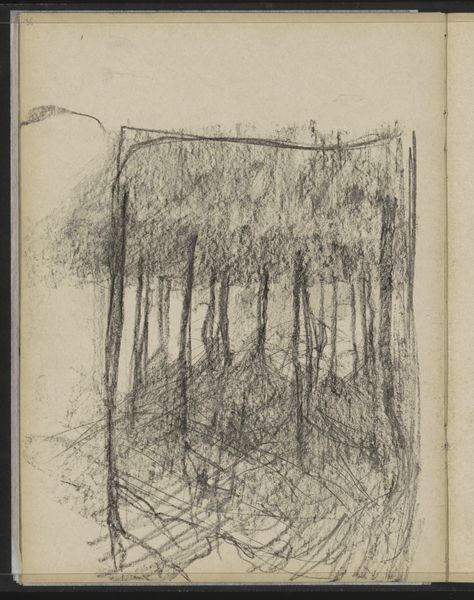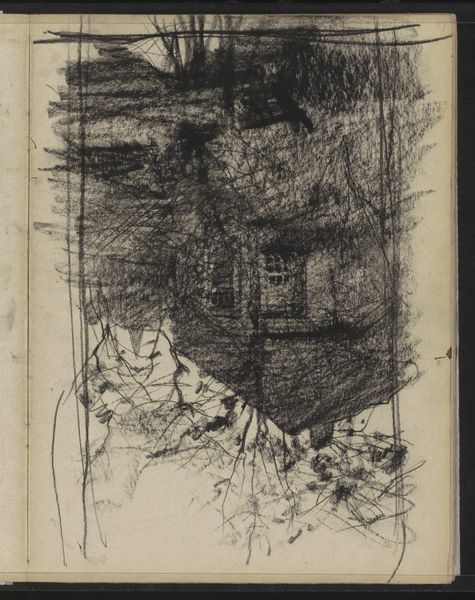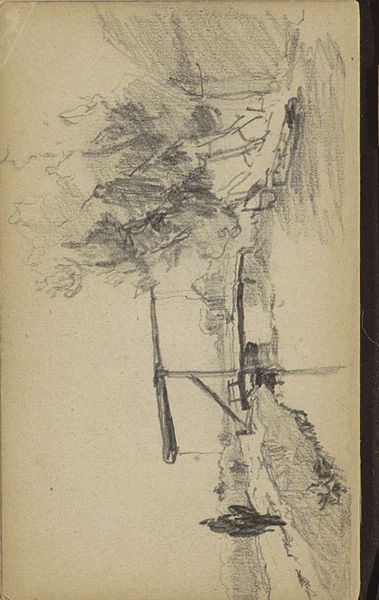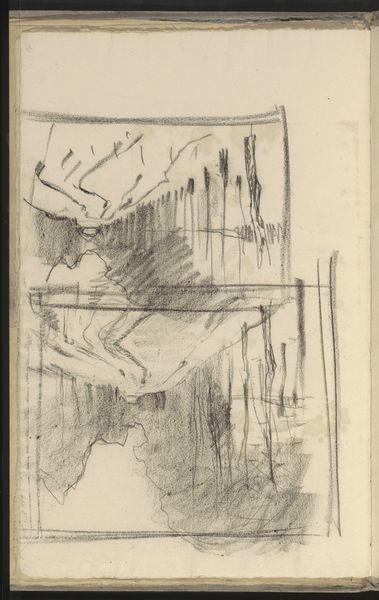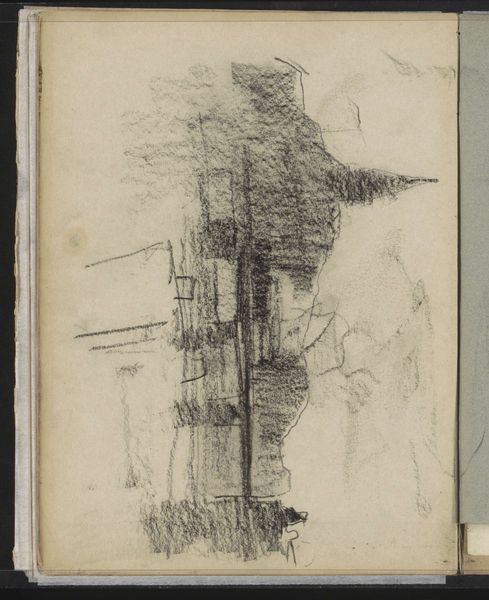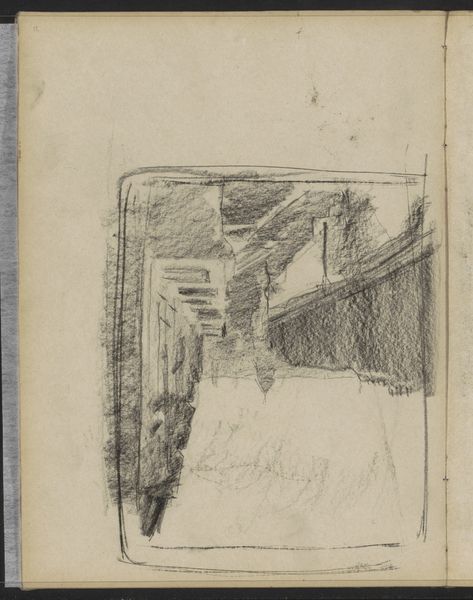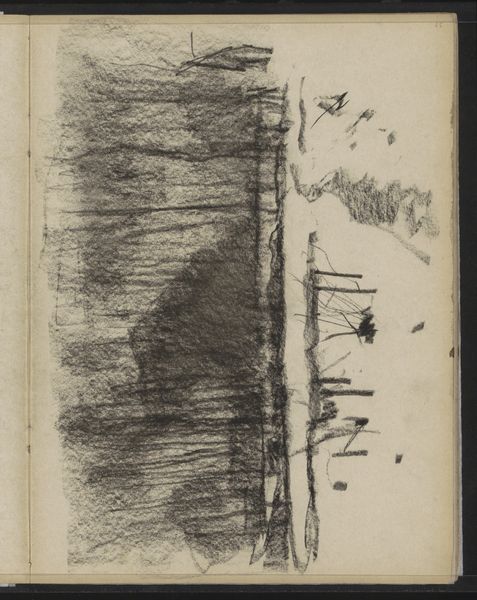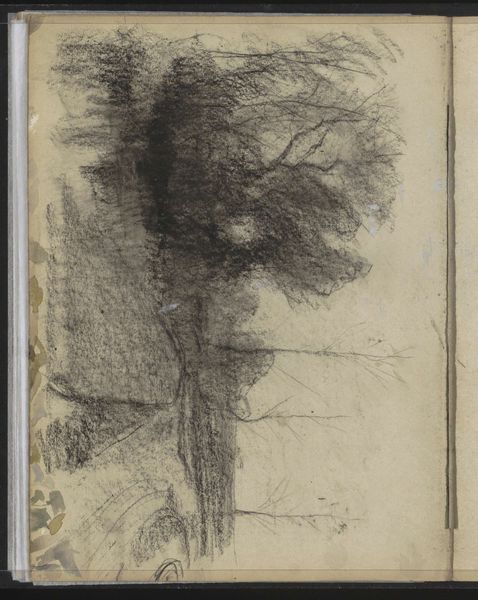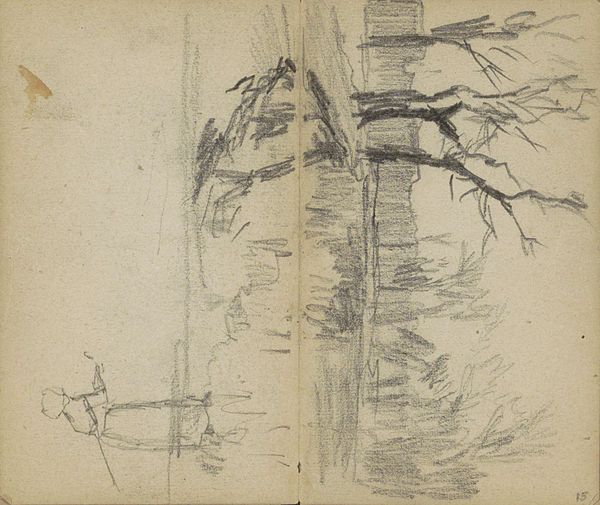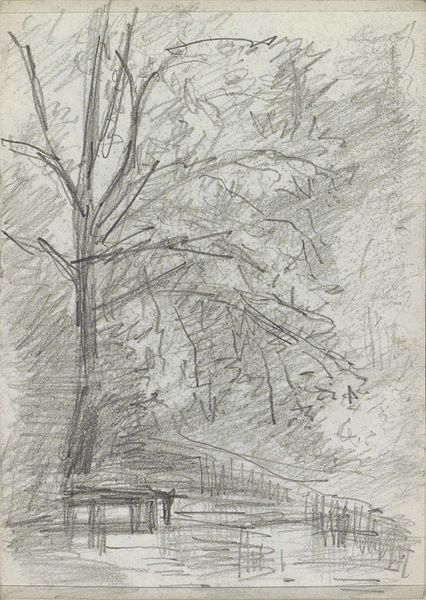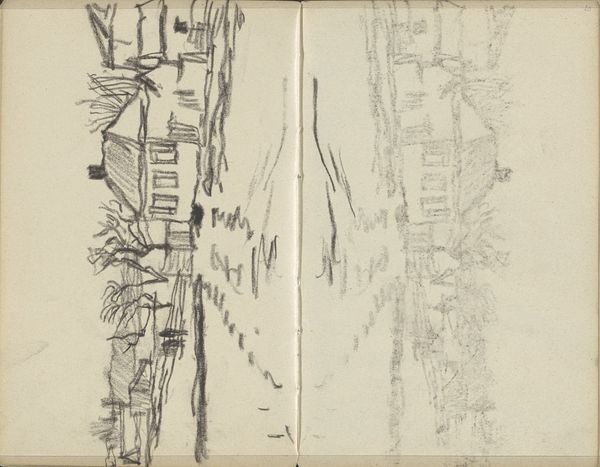
drawing, pencil
#
drawing
#
quirky sketch
#
impressionism
#
pen sketch
#
sketch book
#
incomplete sketchy
#
landscape
#
personal sketchbook
#
sketchwork
#
pen-ink sketch
#
pencil
#
pen work
#
sketchbook drawing
#
sketchbook art
#
realism
Copyright: Rijks Museum: Open Domain
Editor: So, here we have Willem Witsen's "Gezicht op Kasteel Warmelo te Diepenheim," a drawing from around 1887. It feels very intimate, like a peek into the artist's personal sketchbook. What catches your eye about it? How do you interpret this work? Curator: What I find compelling is how Witsen, a figure associated with the Amsterdam Impressionists, captures a moment of quiet observation but also, perhaps, a deeper societal tension. The castle, traditionally a symbol of power and privilege, is rendered almost ethereally, its reflection blurring the lines between reality and illusion. Editor: Tension? What kind of tension are you seeing? Curator: Consider the late 19th century in the Netherlands. It was a period of social and political upheaval. While the elite clung to their inherited status, new ideologies were emerging. Witsen, though coming from a privileged background himself, was part of a circle of artists and intellectuals questioning the established order. Editor: So you think this landscape might be subtly questioning the elite's place in society? Curator: Precisely! The blurred reflection can be seen as destabilizing that solid, impenetrable power, showing it may just be a mere reflection of something. What we call today deconstruction, centuries later. Editor: That's fascinating. I never would have looked at a landscape that way. So much more than just trees and water here! Curator: Exactly! By situating it within that socio-political frame, it reveals the quiet undercurrents of dissent rippling through even the most traditional artistic genres. What about it will you take into consideration for future pieces you encounter? Editor: How crucial it is to understanding the societal position of the artist themselves and what messages or feelings they could be aiming to transmit through what looks to the average eye just as simple everyday scenes.
Comments
No comments
Be the first to comment and join the conversation on the ultimate creative platform.
